Educational Games for Kids: Unlocking Learning Through Play
The Magic of Learning Through Play
Where education meets imagination, and every game becomes a gateway to discovery.
In today's rapidly evolving educational landscape, the power of play has emerged as one of the most effective tools for childhood learning and development. Educational games for kids represent a revolutionary approach that seamlessly blends entertainment with instruction, creating immersive experiences where children stories come alive, bedtime stories spark curiosity, and interactive activities foster critical thinking skills.
The concept of learning through play isn't merely a modern trend—it's a fundamental aspect of human development that has been recognized by educators, psychologists, and child development experts for decades. When we combine the timeless appeal of fairy tales and moral stories with innovative educational methodologies, we create powerful learning environments that engage multiple senses and learning styles simultaneously.
Educational games serve as bridges between abstract concepts and concrete understanding, transforming complex ideas into accessible, enjoyable experiences. Whether through adventure stories that teach problem-solving, picture books that enhance literacy skills, or interactive STEM activities that make science tangible, these tools recognize that children learn best when they're actively engaged and emotionally invested in the process.
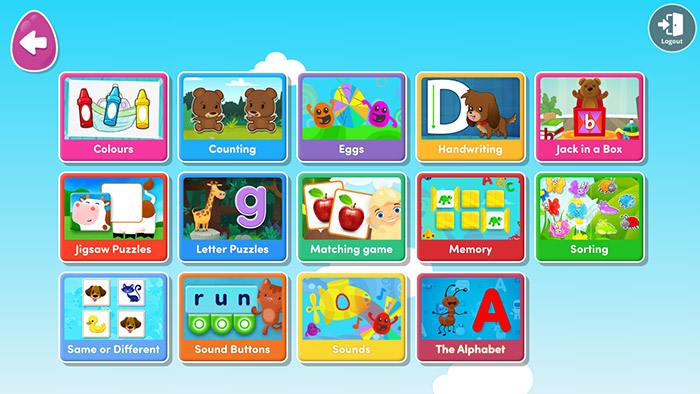
Interactive educational games create engaging learning environments for young learners
The Science Behind Educational Games
Cognitive Development
Educational games stimulate multiple areas of the brain simultaneously, promoting neural pathway development and enhancing cognitive flexibility. Through storytelling and imaginative play, children develop executive function skills, working memory, and problem-solving abilities that form the foundation for academic success.
Emotional Intelligence
Through moral stories and character-driven narratives, educational games help children develop empathy, emotional regulation, and social skills. These heartwarming tales provide safe spaces for exploring complex emotions and learning appropriate responses to various social situations.
Research in educational psychology consistently demonstrates that children retain information more effectively when learning is combined with play. This phenomenon, known as the "gamification effect," occurs because games naturally incorporate several key learning principles: immediate feedback, progressive difficulty, intrinsic motivation, and social interaction.
When children engage with educational stories and interactive activities, their brains release dopamine—a neurotransmitter associated with pleasure and reward. This chemical response not only makes learning enjoyable but also strengthens memory formation and recall. Classic tales and fables have used this principle for centuries, embedding moral lessons within engaging narratives that children remember long into adulthood.
The multisensory nature of modern educational games—combining visual, auditory, and kinesthetic elements—appeals to different learning styles and ensures that every child can find their preferred pathway to understanding. Whether through illustrated books that bring stories to life, interactive digital platforms that respond to touch and voice, or hands-on activities that encourage exploration, these tools recognize that learning is most effective when it engages the whole child.
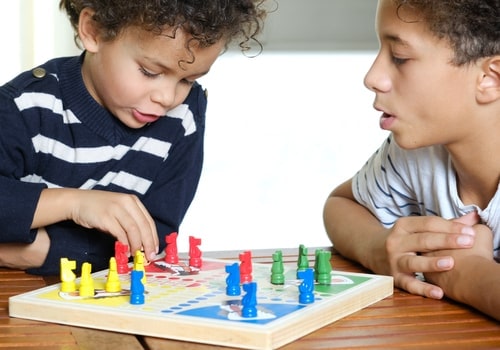
Scientific research supports the effectiveness of educational games in child development
Comprehensive Guide to Educational Game Types
Traditional Board Games: Building Social Skills and Strategic Thinking
Traditional board games represent one of the oldest and most effective forms of educational entertainment. These timeless activities combine social interaction with cognitive challenge, creating opportunities for children to develop critical thinking skills while enjoying quality time with family and peers.
The beauty of educational board games lies in their ability to teach multiple skills simultaneously. As children engage in strategic planning, they're also practicing math skills, improving reading comprehension, developing patience, and learning to follow rules and take turns. These games often incorporate elements of storytelling, allowing players to immerse themselves in different worlds and scenarios.
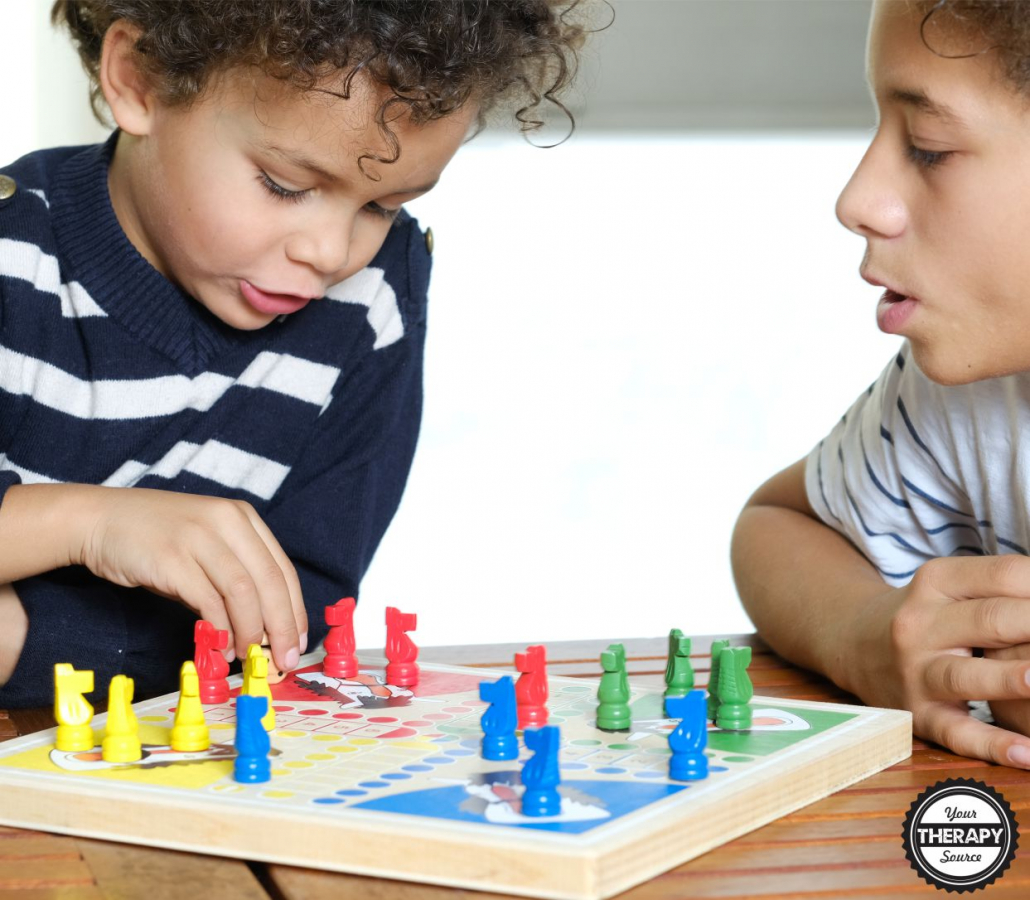
Board games foster social interaction and strategic thinking skills
Math & Logic Games
- • Number recognition and counting
- • Pattern identification
- • Probability and statistics basics
- • Logical reasoning development
Language & Literacy
- • Vocabulary expansion
- • Spelling and word formation
- • Reading comprehension
- • Creative storytelling
Social & Emotional
- • Turn-taking and patience
- • Good sportsmanship
- • Cooperative problem-solving
- • Communication skills
Popular educational board games often draw inspiration from adventure stories and fantasy worlds, allowing children to embark on quests, solve mysteries, and overcome challenges. These narrative elements transform abstract learning concepts into concrete, memorable experiences. For instance, a math-based board game might involve collecting treasure through correct calculations, while a literacy game could require players to create stories using specific words or phrases.
Digital Educational Games: Technology Meets Learning
The digital revolution has transformed educational gaming, creating immersive, interactive experiences that adapt to individual learning styles and paces. Digital educational games leverage technology's power to provide immediate feedback, personalized learning paths, and multimedia content that brings abstract concepts to life.
Modern digital platforms combine the appeal of children stories with interactive elements, allowing kids to become active participants in their favorite tales. These games often feature beloved characters from classic stories and fairy tales, creating familiar entry points for learning new concepts. The integration of animation, sound effects, and responsive interfaces creates engaging environments where learning feels like play.
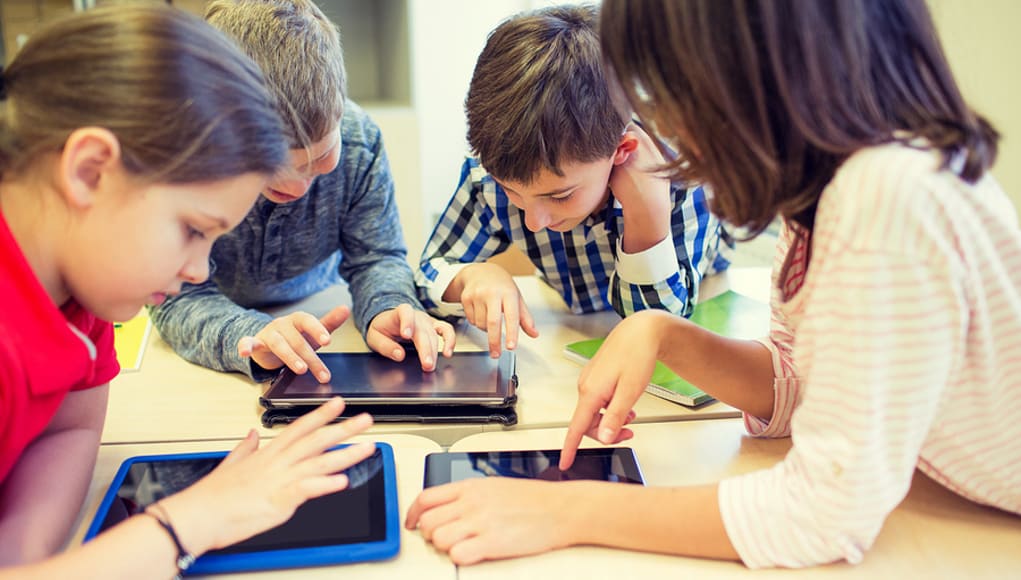
Digital educational games provide personalized, interactive learning experiences
Key Advantages of Digital Educational Games
Personalized Learning
Adaptive algorithms adjust difficulty levels based on individual progress, ensuring optimal challenge and preventing frustration or boredom.
Immediate Feedback
Instant responses to actions help reinforce correct understanding and quickly address misconceptions.
Accessibility
Available anytime, anywhere, making learning convenient and flexible for modern families.
Progress Tracking
Detailed analytics help parents and educators monitor development and identify areas needing attention.
Digital educational games excel at creating immersive storytime experiences where children can interact with characters, influence plot outcomes, and explore different narrative paths. These interactive stories develop reading comprehension, decision-making skills, and creative thinking while maintaining the engagement factor that traditional bedtime stories provide.
The gamification elements built into digital platforms—such as point systems, achievement badges, and progress bars—tap into children's natural desire for accomplishment and recognition. When combined with educational content drawn from moral stories and classic tales, these systems create powerful motivation for continued learning and exploration.
STEM Educational Games: Building Tomorrow's Innovators
Science, Technology, Engineering, and Mathematics (STEM) education has become increasingly important in preparing children for future careers and informed citizenship. STEM educational games make these often abstract subjects concrete and accessible by embedding learning within engaging, hands-on activities that encourage experimentation and discovery.
The most effective STEM games combine scientific concepts with storytelling elements, creating adventure stories where children must use engineering principles to build bridges, apply mathematical concepts to solve puzzles, or conduct virtual experiments to advance through different levels. This narrative framework helps children understand the real-world applications of STEM concepts while maintaining engagement through compelling storylines.
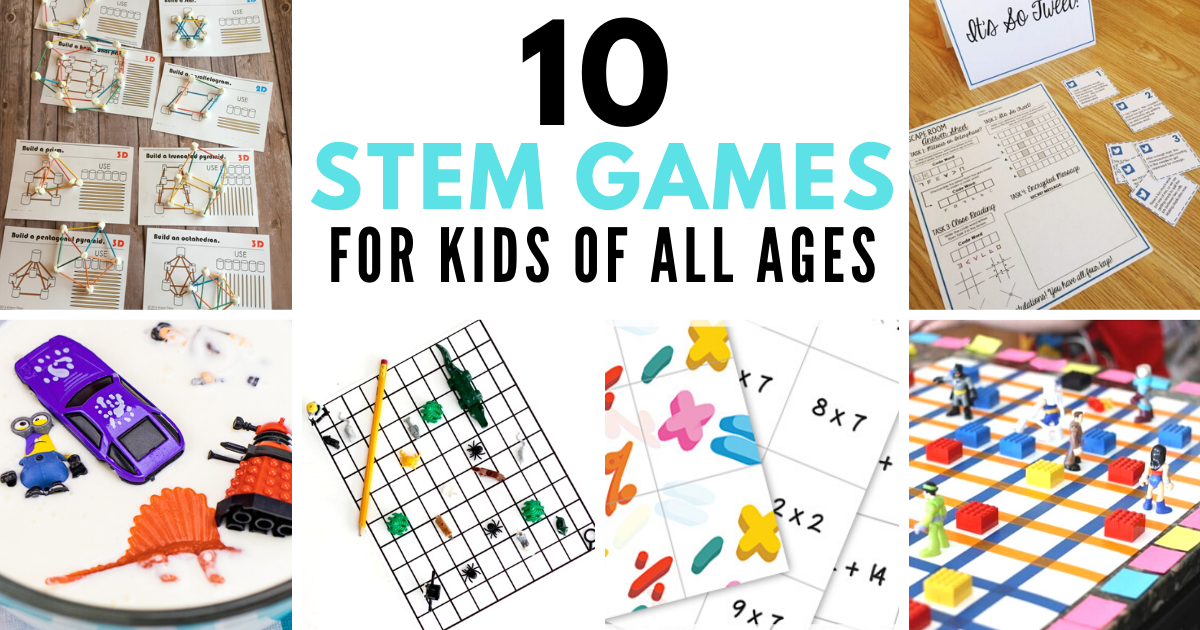
STEM games make science and mathematics accessible through hands-on learning
Science Games
Exploration, experimentation, hypothesis testing
Technology
Coding, digital literacy, computational thinking
Engineering
Design thinking, problem-solving, building
Mathematics
Number sense, geometry, logical reasoning
STEM educational games often incorporate elements from fantasy stories and imaginative scenarios to make complex concepts more relatable. For example, a physics game might involve helping magical characters understand the principles of motion and force, while a chemistry game could feature young wizards learning about molecular structures and reactions. These narrative frameworks help children connect abstract scientific concepts to familiar story elements, making learning more intuitive and memorable.
The collaborative nature of many STEM games encourages children to work together, sharing ideas and building upon each other's discoveries. This social aspect mirrors real-world scientific collaboration while developing communication skills and teamwork abilities. Additionally, the trial-and-error nature of STEM games teaches children that failure is a natural part of the learning process, building resilience and encouraging continued experimentation.
Age-Appropriate Educational Games: From Toddlers to Teens
Preschool Ages (2-5): Foundation Building Through Play
The preschool years represent a critical period for cognitive, social, and emotional development. Educational games for this age group focus on building fundamental skills through sensory exploration, simple problem-solving, and creative expression. Preschool stories and toddler tales serve as excellent foundations for learning activities that combine literacy development with other essential skills.
At this stage, children are naturally curious about the world around them, making it an ideal time to introduce educational concepts through play. The most effective preschool educational games incorporate familiar elements from nursery rhymes, simple fairy tales, and animal stories that children already know and love, creating comfortable learning environments where new concepts can take root.
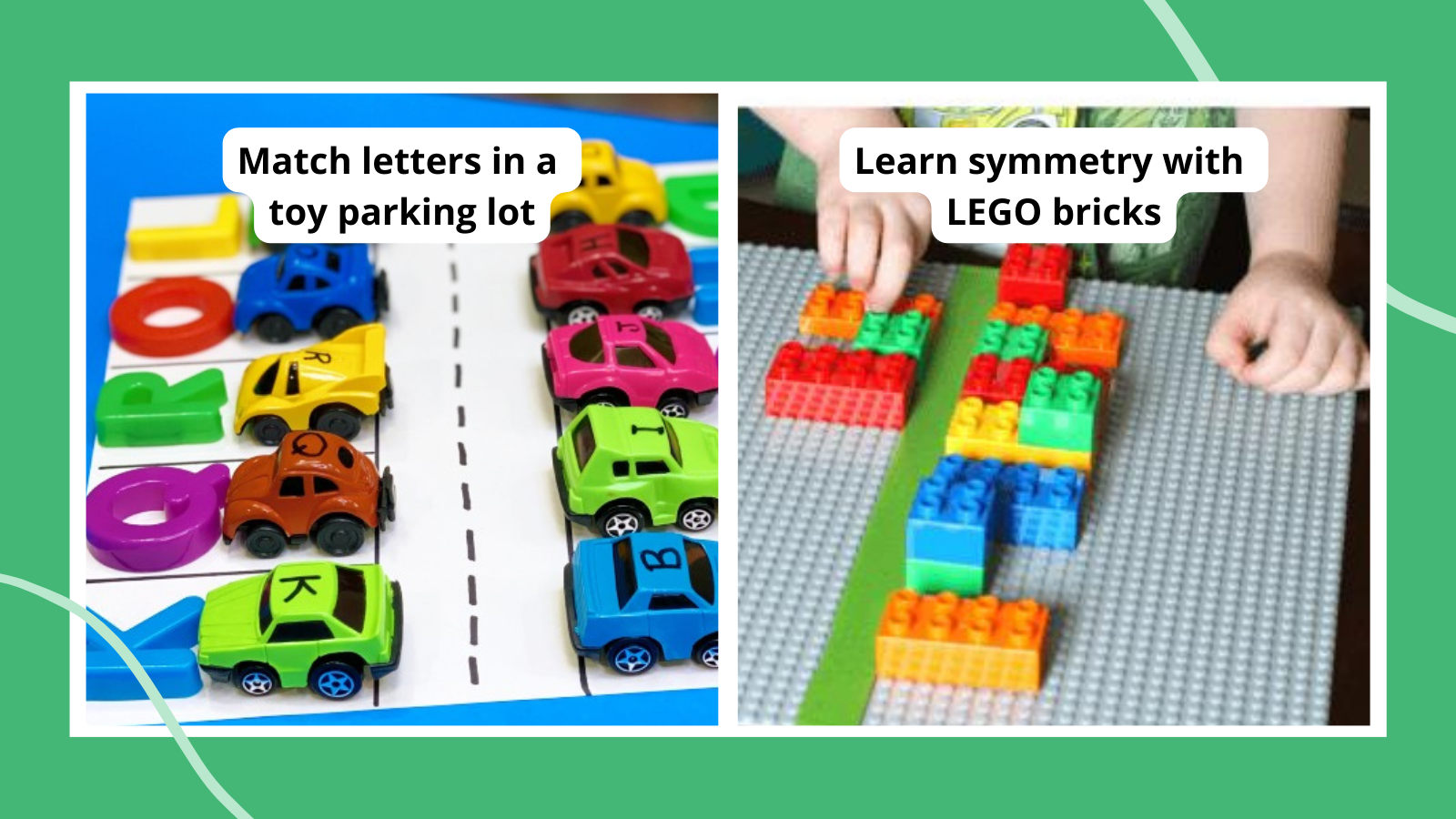
Preschool educational activities build foundational skills through engaging play
Essential Skills for Preschoolers
Cognitive Development
- • Color and shape recognition
- • Number awareness (1-10)
- • Letter identification
- • Pattern recognition
- • Memory development
Language Skills
- • Vocabulary expansion
- • Listening comprehension
- • Phonemic awareness
- • Story sequencing
- • Verbal expression
Social-Emotional
- • Sharing and cooperation
- • Emotional recognition
- • Following simple rules
- • Self-regulation
- • Empathy development
Interactive storytelling games work particularly well for preschoolers, combining the comfort of familiar bedtime stories with educational content. These games might involve helping story characters solve simple problems, identifying objects within illustrated scenes, or participating in repetitive, rhythmic activities that reinforce learning through repetition and music.
The key to successful preschool educational games lies in maintaining short attention spans while providing meaningful learning opportunities. Games should be simple enough to avoid frustration but engaging enough to hold interest, often incorporating movement, music, and multi-sensory experiences that appeal to different learning preferences.
Elementary Ages (6-11): Academic Skills Through Adventure
Elementary school years mark a significant transition from foundational skills to more complex academic concepts. Educational games for this age group bridge the gap between play and formal learning, incorporating elements from adventure stories, classic tales, and moral stories to create engaging educational experiences that support curriculum requirements while maintaining the fun factor that keeps children motivated.
Children in this age range are developing stronger reading abilities, mathematical reasoning skills, and scientific curiosity. Educational games can leverage these developing competencies while introducing more sophisticated concepts through narrative frameworks that make abstract ideas concrete and memorable. The integration of technology at this level allows for more complex interactions and personalized learning experiences.

Elementary students engage with age-appropriate educational games and activities
Academic Integration
Elementary educational games should align with curriculum standards while providing enrichment opportunities that go beyond basic requirements. These games often incorporate elements from picture books and illustrated stories to support reading comprehension and vocabulary development.
- • Mathematics: Addition, subtraction, multiplication, division
- • Reading: Comprehension, fluency, vocabulary
- • Science: Basic experiments, observation skills
- • Social Studies: Geography, history, civic responsibility
Skill Development
This age group benefits from games that challenge critical thinking while building confidence through achievable goals and positive reinforcement. Fantasy stories and imaginative scenarios provide engaging contexts for skill practice.
- • Problem-solving strategies
- • Research and information literacy
- • Collaborative learning
- • Creative expression and communication
Story-based educational games work exceptionally well for elementary students, allowing them to become heroes in their own learning adventures. These games might involve solving mathematical puzzles to unlock the next chapter of a mystery story, conducting virtual science experiments to help story characters overcome challenges, or using geography skills to navigate through different story settings.
The social aspect of gaming becomes increasingly important at this age, with multiplayer educational games providing opportunities for peer learning and collaboration. These interactions help develop communication skills, leadership abilities, and cultural awareness while reinforcing academic concepts through peer teaching and discussion.
Middle School Ages (12-14): Complex Thinking and Real-World Application
Middle school represents a crucial transition period where children develop abstract thinking abilities and begin to understand complex relationships between different concepts. Educational games for this age group must balance entertainment with sophisticated content that challenges developing minds while addressing the social and emotional changes characteristic of adolescence.
At this stage, students are capable of engaging with more mature themes and complex narratives. Educational games can incorporate elements from classic literature, historical events, and real-world scenarios to create immersive learning experiences that prepare students for high school and beyond. The integration of storytelling with academic content becomes even more powerful as students develop the cognitive capacity to understand metaphor, symbolism, and multiple perspectives.
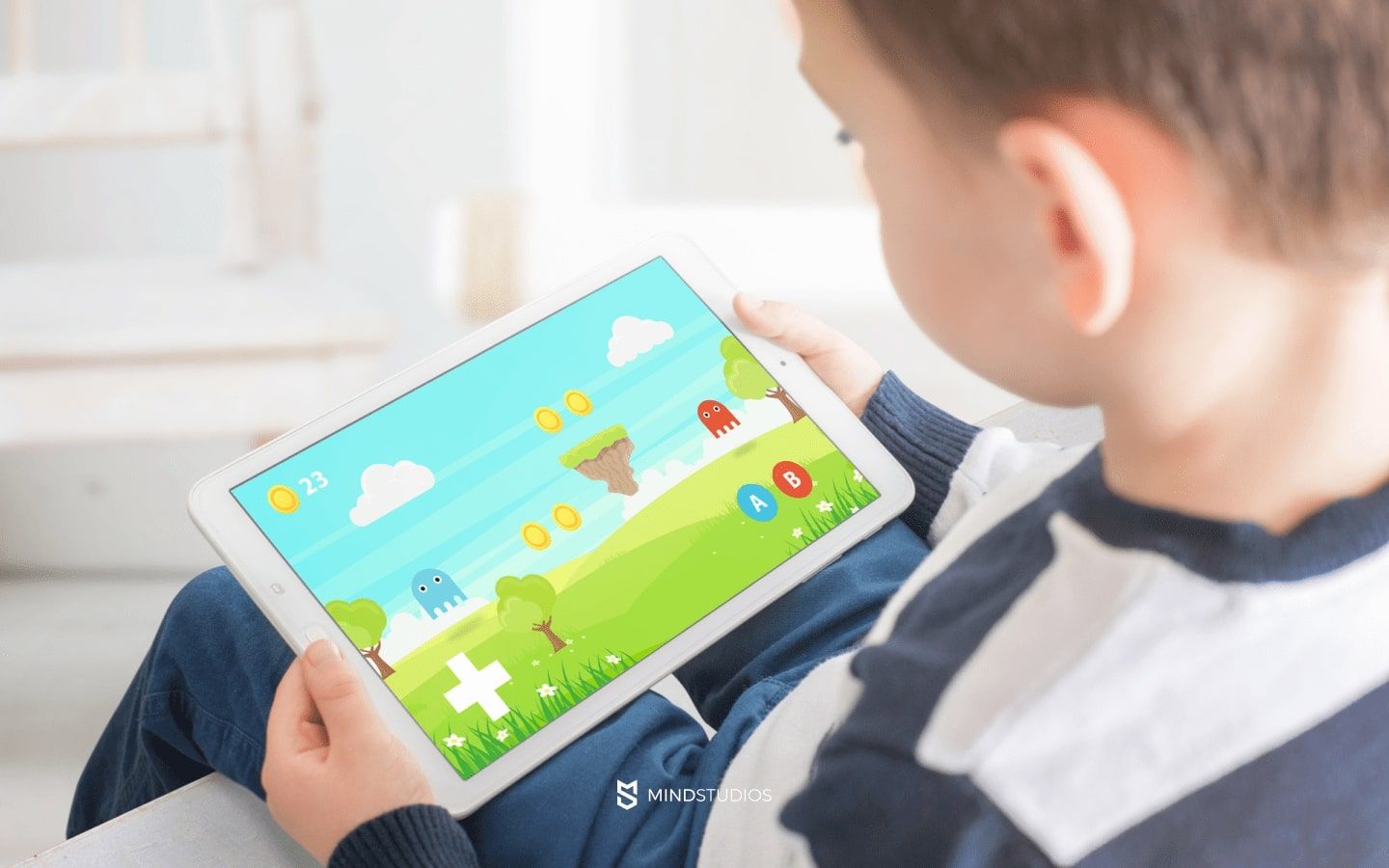
Middle school educational games prepare students for advanced academic challenges
Advanced Learning Objectives
Critical Thinking Skills
Middle schoolers can engage with games that require analysis, synthesis, and evaluation of information from multiple sources.
Digital Citizenship
Understanding online safety, ethical technology use, and digital communication becomes crucial at this age.
Real-World Connections
Games should demonstrate how academic concepts apply to real-world situations and future career possibilities.
Independent Learning
Developing self-directed learning skills and personal responsibility for educational progress.
Educational games for middle schoolers often incorporate elements of simulation and role-playing, allowing students to experience historical events, manage virtual ecosystems, or solve complex engineering challenges. These immersive experiences help students understand cause-and-effect relationships, develop systems thinking, and appreciate the interconnected nature of different academic disciplines.
The storytelling aspect remains important but evolves to include more sophisticated narratives that address themes relevant to adolescent development: identity formation, moral decision-making, and understanding diverse perspectives. Interactive stories at this level might explore historical conflicts, environmental challenges, or social justice issues, providing safe spaces for students to grapple with complex topics while developing empathy and critical thinking skills.
The Power of Stories in Educational Gaming
The integration of children's literature with educational gaming represents one of the most powerful approaches to learning enhancement. Stories have always been humanity's primary method for transmitting knowledge, values, and cultural understanding from one generation to the next. When we combine the timeless appeal of bedtime stories, fairy tales, and moral stories with interactive gaming elements, we create learning experiences that resonate on both intellectual and emotional levels.
Classic tales and fables provide rich narrative frameworks that can support virtually any educational objective. Whether teaching mathematical concepts through the story of Goldilocks and the Three Bears (exploring concepts of size, quantity, and comparison), introducing scientific principles through Jack and the Beanstalk (plant growth, gravity, and measurement), or developing social-emotional skills through the moral lessons embedded in traditional fables, stories provide context that makes abstract concepts concrete and memorable.
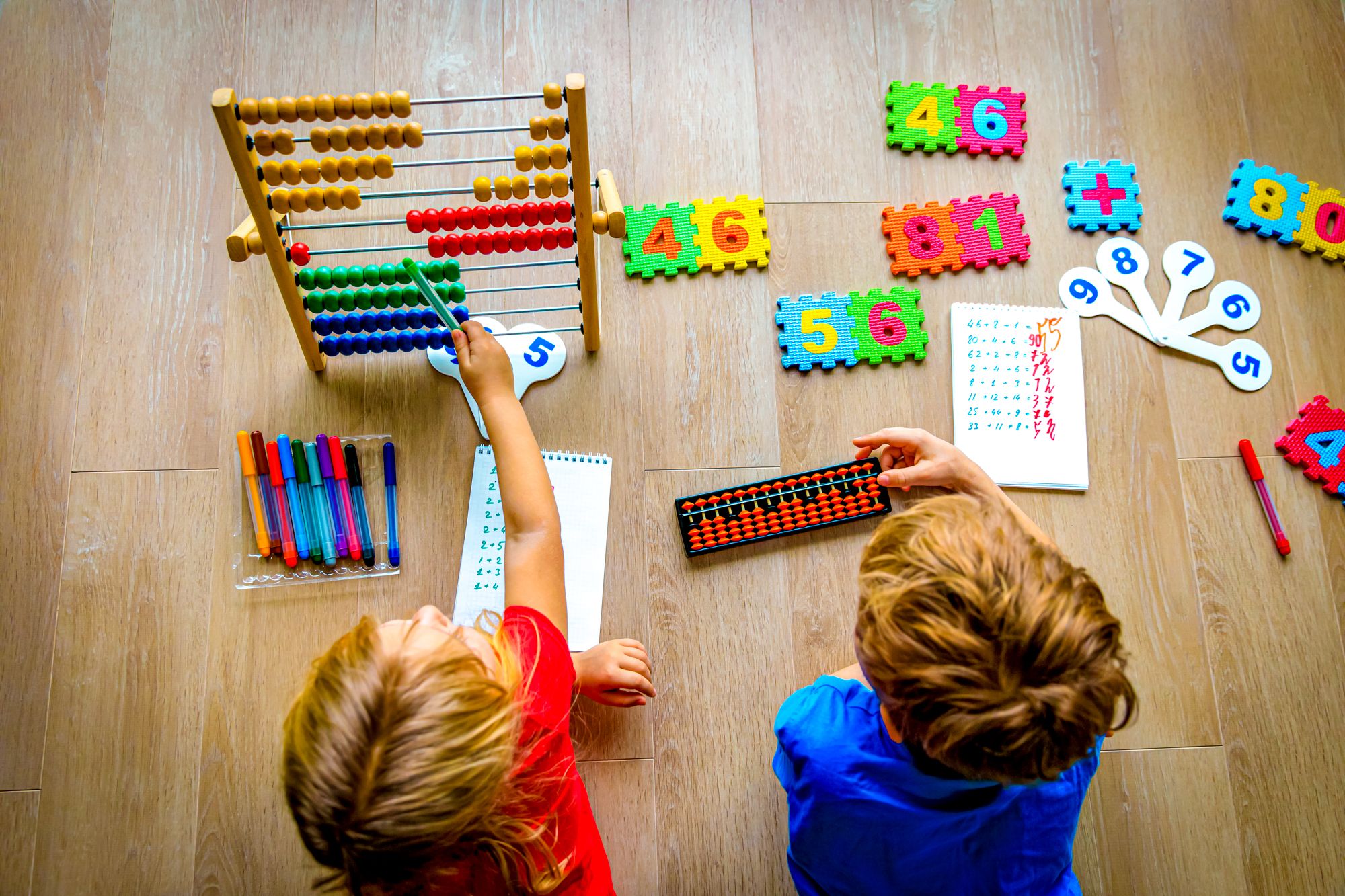
Story-based learning activities make education engaging and memorable
Why Stories Enhance Learning
Memory Enhancement
Stories provide narrative structure that helps children organize and retain information more effectively than isolated facts or procedures.
Emotional Connection
Characters and plots create emotional investment that motivates continued engagement and deeper understanding.
Contextual Learning
Stories provide meaningful contexts that help children understand when and why to apply specific knowledge or skills.
Interactive storytelling games excel at creating what educators call "situated learning"—learning that occurs within authentic, meaningful contexts rather than in isolation. When children help story characters solve problems, they're not just practicing academic skills; they're developing the ability to transfer those skills to new situations and understand their real-world applications.
Picture books and illustrated stories add another dimension to educational gaming by providing visual literacy skills alongside traditional academic content. Children learn to interpret images, understand visual metaphors, and make connections between text and illustrations—skills that are increasingly important in our media-rich world.
Creating Effective Story-Based Educational Games
Essential Elements of Story-Based Learning
Compelling Characters
Characters should be relatable and face challenges that mirror the learning objectives, allowing children to identify with their struggles and celebrate their successes.
Meaningful Choices
Interactive elements should provide meaningful choices that affect story outcomes, teaching children about cause and effect while reinforcing educational content.
Embedded Learning
Educational content should feel natural within the story context, not forced or artificial, maintaining engagement while achieving learning objectives.
The most successful educational games draw from the rich tradition of children's literature while adapting classic stories for interactive experiences. These adaptations might involve helping Cinderella understand patterns and sequences as she completes her chores, joining Alice in Wonderland for mathematical adventures in logic and reasoning, or supporting the Three Little Pigs in engineering challenges as they build their houses.
Modern technology allows for even more sophisticated integration of storytelling and education through multimedia presentations, branching narratives, and user-generated content. Children can create their own illustrated books, record their own storytimes, or collaborate on adventure stories that incorporate learning objectives across multiple subject areas.
Measuring Success: The Impact of Educational Games
Research consistently demonstrates that well-designed educational games produce measurable improvements in academic achievement, engagement levels, and skill retention. However, the benefits extend far beyond traditional academic metrics to include enhanced creativity, improved social skills, and increased motivation for lifelong learning.
Longitudinal studies tracking children who regularly engage with educational games show improved performance across multiple domains, from standardized test scores to creative problem-solving abilities. The combination of immediate feedback, adaptive difficulty levels, and intrinsic motivation creates optimal conditions for learning that traditional instructional methods often struggle to achieve.

Educational games demonstrate measurable positive impacts on learning outcomes
Academic Achievement and Skill Development
Cognitive Benefits
- Improved working memory capacity
- Enhanced problem-solving strategies
- Increased attention and focus
- Better pattern recognition skills
- Stronger executive function abilities
Academic Skills
- Advanced reading comprehension
- Mathematical reasoning abilities
- Scientific inquiry skills
- Historical thinking capabilities
- Enhanced creativity and innovation
The storytelling component of educational games plays a crucial role in these academic improvements. When children engage with moral stories and classic tales embedded within gaming contexts, they develop not only specific subject knowledge but also broader literacy skills, cultural awareness, and ethical reasoning abilities that transfer to other areas of learning.
Interactive stories and adventure games that incorporate educational content show particular promise for developing what educators call "21st-century skills"—critical thinking, creativity, collaboration, and communication abilities that are essential for success in modern society.
Social and Emotional Development
Beyond Academics: Whole Child Development
Social Skills
Cooperation, communication, empathy, and conflict resolution through collaborative gaming experiences
Emotional Intelligence
Self-awareness, emotional regulation, and understanding others' perspectives through story-based interactions
Resilience
Persistence through challenges, learning from failure, and developing growth mindset through progressive gaming
Educational games that incorporate heartwarming tales and moral stories provide unique opportunities for social-emotional learning. Children encounter characters facing ethical dilemmas, relationship challenges, and personal growth opportunities, allowing them to explore these concepts in safe, supportive environments before encountering similar situations in real life.
The collaborative nature of many educational games helps children develop essential social skills while learning academic content. When children work together to solve puzzles, complete quests, or create stories, they're practicing communication, negotiation, leadership, and teamwork skills that serve them throughout their lives.
Long-term Educational Impact
Perhaps the most significant benefit of educational games lies in their ability to foster positive attitudes toward learning that persist throughout children's educational journeys. When learning is associated with enjoyment, success, and personal agency, children develop intrinsic motivation that drives continued exploration and growth.
Students who regularly engage with educational games often demonstrate increased curiosity, better self-regulation skills, and greater confidence in tackling new challenges. These dispositional changes are often more valuable than specific content knowledge, as they enable lifelong learning and adaptation to changing circumstances.
The storytelling elements embedded in educational games contribute to this long-term impact by helping children develop narrative thinking skills—the ability to understand and create coherent stories about their experiences, goals, and identities. This capacity for narrative thinking supports everything from reading comprehension to career planning to relationship building throughout their lives.
Implementing Educational Games: A Practical Guide
Successfully integrating educational games into children's learning experiences requires thoughtful planning, appropriate resource selection, and ongoing assessment. Whether implementing games in classroom settings, homeschool environments, or family activities, certain principles and strategies can maximize the educational impact while maintaining the engagement that makes gaming so powerful.
The key to successful implementation lies in understanding that educational games work best when they complement rather than replace traditional learning activities. The most effective approaches combine the immediate engagement of gaming with the depth and reflection that come from discussion, extension activities, and real-world application of learned concepts.

Successful implementation creates engaging learning environments for all students
Classroom Integration Strategies
Curriculum Alignment
Educational games should support specific learning objectives and standards rather than serving as entertainment or time-fillers.
- • Map games to curriculum standards
- • Identify specific learning outcomes
- • Plan pre- and post-gaming activities
- • Create assessment rubrics
Differentiated Instruction
Games should accommodate different learning styles, ability levels, and cultural backgrounds within the classroom.
- • Provide multiple difficulty levels
- • Offer various interaction modes
- • Include multilingual options
- • Support diverse learning preferences
Best Practices for Classroom Gaming
Start Small
Begin with simple games that address specific learning objectives before implementing more complex gaming systems.
Establish Clear Expectations
Set ground rules for gaming behavior, collaboration, and learning goals before beginning any gaming activity.
Facilitate Reflection
Include structured reflection time where students can discuss their learning, strategies, and insights from gaming experiences.
Educational games that incorporate children stories and interactive narratives work particularly well in classroom settings because they provide common reference points for discussion and extension activities. Teachers can use these shared story experiences to explore character development, plot structure, moral dilemmas, and connections to students' own lives and experiences.
The storytelling component also supports cross-curricular integration, allowing teachers to connect literacy activities with science exploration, mathematical problem-solving with historical understanding, and artistic expression with social-emotional learning goals.
Home Learning Environment
Parents play a crucial role in maximizing the educational benefits of gaming by creating supportive home environments that extend and reinforce learning beyond the game itself. The most effective approach involves active parental participation rather than passive supervision, transforming gaming into shared family learning experiences.
Home implementation of educational games offers unique advantages, including flexible scheduling, personalized attention, and the ability to connect gaming activities to family values and interests. Parents can leverage bedtime stories, family traditions, and cultural backgrounds to enhance the educational impact of gaming experiences.
Structured Schedule
Create regular gaming times that balance screen time with other activities and maintain consistent learning routines.
Active Participation
Engage with children during gaming, asking questions, making connections, and extending learning beyond the game.
Real-World Connections
Help children see connections between game content and real-life situations, experiences, and learning opportunities.
Creating Learning-Rich Gaming Experiences
Parents can transform any educational game into a richer learning experience by incorporating storytelling elements, encouraging creative extension activities, and connecting game content to children's interests and experiences. This might involve:
- Creating family stories based on game characters and scenarios
- Drawing or writing about favorite game moments
- Acting out story scenes or game situations
- Connecting game lessons to real-world family activities
- Using game themes for creative play and imagination
These extensions help children internalize learning while strengthening family bonds and creating positive associations with educational activities.
The integration of educational games with traditional family activities—such as reading bedtime stories, sharing moral tales, or creating family adventure stories—creates powerful synergies that reinforce learning while maintaining the special quality of family time. Parents who actively participate in their children's gaming experiences often report stronger relationships and more meaningful conversations about learning and growth.
Assessment and Progress Monitoring
Effective assessment of learning through educational games requires a multifaceted approach that goes beyond traditional testing to include observation, portfolio development, and self-reflection. The goal is to understand not just what children have learned but how they learn and what motivates their continued engagement with educational content.
Assessment strategies should capture both the academic learning and the social-emotional development that occurs through gaming experiences. This holistic approach provides a more complete picture of children's growth and helps identify areas where additional support or enrichment might be beneficial.
Formative Assessment
- • Observation during gameplay
- • Documentation of strategy development
- • Reflection journals and discussions
- • Peer feedback and collaboration assessment
- • Progress tracking within games
Summative Assessment
- • Portfolio of gaming achievements
- • Creative projects based on game experiences
- • Transfer tasks applying game knowledge
- • Collaborative presentations or performances
- • Self-assessment and goal setting
The storytelling elements in educational games provide rich opportunities for assessment through creative expression. Children can retell favorite stories, create alternate endings, develop new characters, or connect story themes to their own experiences. These activities reveal deep understanding while allowing children to demonstrate learning in ways that feel natural and enjoyable.
The Future of Educational Gaming
The landscape of educational gaming continues to evolve rapidly, driven by advances in technology, deeper understanding of learning science, and growing recognition of play's importance in education. Emerging trends suggest exciting possibilities for even more personalized, immersive, and effective learning experiences that maintain the storytelling and engagement elements that make educational games so powerful.
As we look toward the future, several key trends are shaping the development of educational games: artificial intelligence for personalized learning paths, virtual and augmented reality for immersive experiences, and increasing integration with social and emotional learning objectives. These technological advances promise to make educational games even more effective while preserving the human elements—storytelling, creativity, and social connection—that have always been central to meaningful learning.
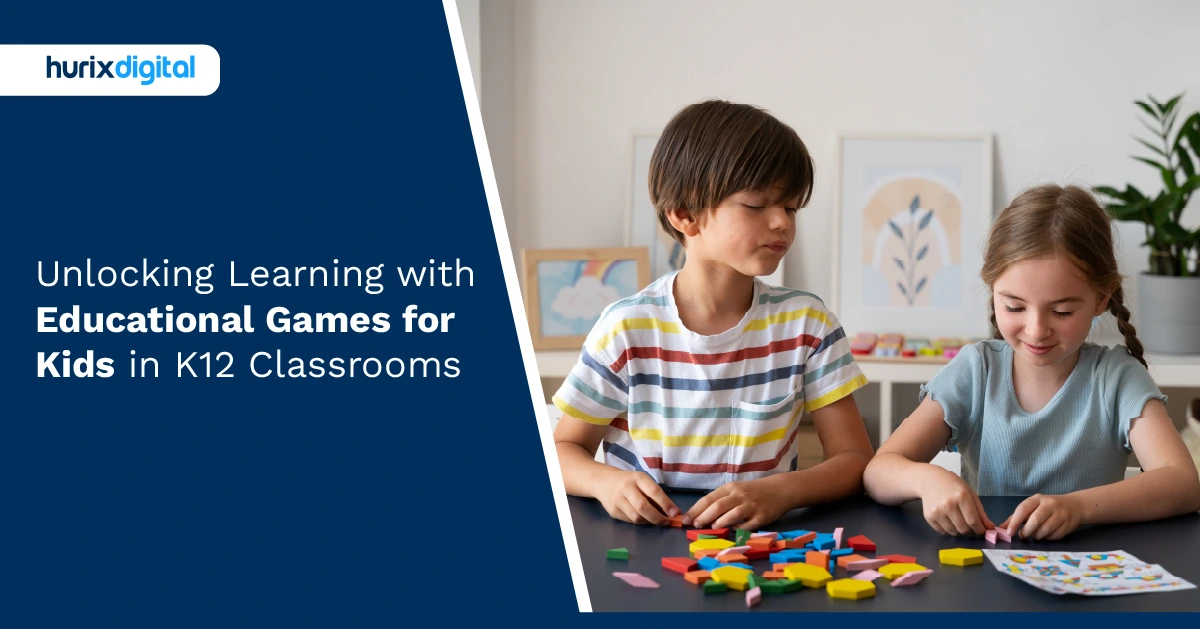
Technology continues to enhance educational gaming experiences while maintaining focus on learning
Emerging Technologies in Educational Gaming
Artificial Intelligence
AI-powered educational games can adapt in real-time to individual learning styles, pacing, and interests, creating truly personalized educational experiences.
- • Dynamic difficulty adjustment
- • Personalized story paths
- • Intelligent tutoring systems
- • Predictive learning analytics
Immersive Technologies
Virtual and augmented reality create immersive learning environments where children can literally step into their favorite stories and educational scenarios.
- • Virtual field trips
- • 3D interactive storytelling
- • Hands-on science simulations
- • Historical recreation experiences
These technological advances are particularly exciting when combined with rich storytelling traditions. Imagine children being able to walk through the settings of their favorite fairy tales, interact with beloved story characters, or become active participants in adventure stories that adapt to their choices and learning needs. The combination of immersive technology with compelling narratives creates unprecedented opportunities for engaging, memorable learning experiences.
Artificial intelligence also offers exciting possibilities for creating dynamic, responsive stories that evolve based on children's interests, learning progress, and emotional responses. These AI-generated narratives could incorporate elements from classic tales while creating new adventures tailored to individual children's preferences and educational needs.
Social Learning and Global Connections
Building Learning Communities Through Gaming
Future educational games will increasingly emphasize social learning and global connections, allowing children from different cultures and backgrounds to collaborate on projects, share stories, and learn from each other's perspectives. These collaborative experiences can:
- Foster cultural awareness and global citizenship
- Develop communication and collaboration skills
- Create opportunities for peer learning and mentorship
- Build empathy through shared story experiences
- Support language learning through authentic interaction
The storytelling component becomes even more powerful in these global contexts, as children can share their own cultural stories, learn about different traditions, and create collaborative narratives that bridge cultural divides.
The future of educational gaming also includes greater integration with family and community learning experiences. Games might incorporate local history, family stories, and community resources to create learning experiences that are both globally connected and locally relevant. This approach honors the importance of cultural context while providing opportunities for broader learning and connection.
Multiplayer educational games that incorporate storytelling elements can help children develop essential 21st-century skills while exploring timeless themes from literature and moral instruction. These games might involve collaborative story creation, peer mentoring through narrative frameworks, or group problem-solving within engaging story contexts.
Challenges and Ethical Considerations
As educational gaming continues to evolve, important challenges and ethical considerations must be addressed to ensure that these powerful tools serve children's best interests. Issues around screen time, data privacy, digital equity, and the balance between technology and human interaction require careful consideration and thoughtful solutions.
The most critical challenge lies in maintaining the human elements that make learning meaningful—storytelling, creativity, emotional connection, and social interaction—while leveraging technology's power to enhance rather than replace these essential components. The goal should be to use technology to amplify the timeless appeal of children stories, bedtime stories, and interactive play rather than to substitute digital experiences for human connection.
Privacy & Safety
Protecting children's personal information and ensuring safe online interactions while maintaining engaging educational experiences.
Digital Equity
Ensuring that all children have access to high-quality educational gaming experiences regardless of economic circumstances.
Human Connection
Maintaining the importance of human relationships and face-to-face interaction in educational experiences.
The future of educational gaming must prioritize these human elements while embracing technological innovations that can enhance learning outcomes. The most successful educational games will continue to emphasize storytelling, creativity, and social connection while using technology to make these experiences more accessible, personalized, and effective.
Conclusion: Embracing the Power of Educational Play
Educational games for kids represent far more than entertainment or simple skill practice—they embody a fundamental understanding of how children learn best. By combining the timeless appeal of children stories, bedtime stories, and imaginative play with carefully designed educational content, these games create powerful learning experiences that engage the whole child: intellectually, emotionally, socially, and creatively.
Throughout this comprehensive exploration, we've seen how educational games serve multiple crucial functions in children's development. They make abstract concepts concrete through story-based contexts, provide safe spaces for experimentation and failure, create opportunities for social learning and collaboration, and most importantly, foster positive attitudes toward learning that can last a lifetime.
The integration of storytelling elements—from fairy tales and moral stories to adventure narratives and interactive tales—transforms educational gaming from mere skill practice into meaningful learning adventures. These narrative frameworks help children understand not just what they're learning but why it matters, creating connections between academic content and their own lives, experiences, and aspirations.
As technology continues to evolve, the potential for even more engaging, personalized, and effective educational games continues to expand. However, the core principles remain constant: learning is most effective when it's enjoyable, meaningful, and socially connected. The most successful educational games of the future will continue to honor these principles while leveraging new technologies to create even richer learning experiences.
Whether implemented in classrooms, homeschool environments, or family settings, educational games offer unique opportunities to transform learning from something children have to do into something they want to do. This transformation from external motivation to intrinsic engagement represents one of education's most important goals and one of gaming's most powerful contributions to children's development.
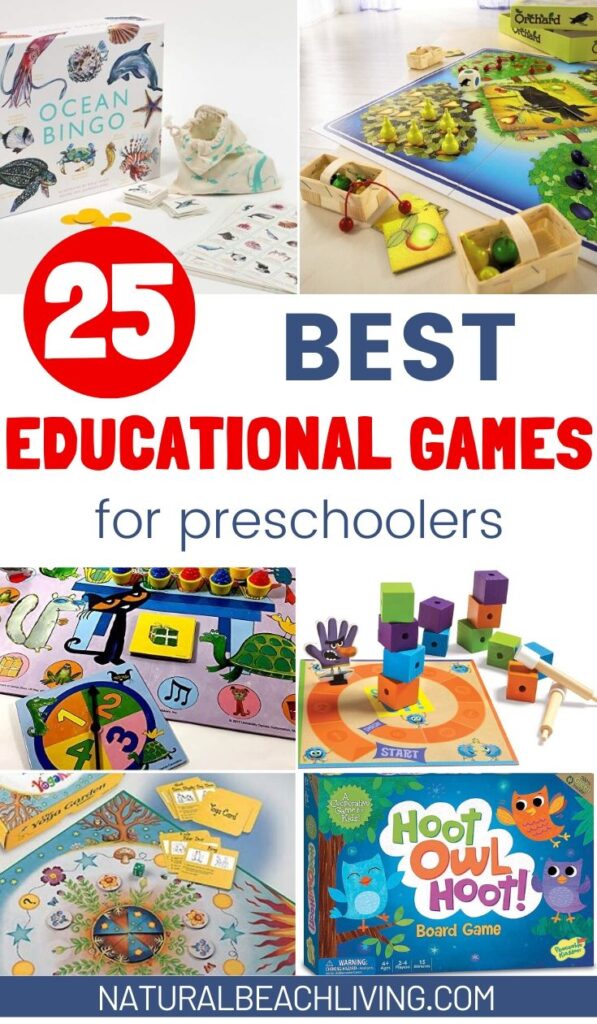
Educational games create lasting positive associations with learning and discovery
Key Takeaways for Parents and Educators
For Parents
- • Choose games that align with your child's interests and developmental stage
- • Participate actively in gaming experiences to extend learning
- • Connect game content to real-world experiences and family values
- • Balance screen-based games with hands-on activities and social interaction
- • Use games as springboards for storytelling and creative expression
For Educators
- • Integrate games purposefully with curriculum objectives and standards
- • Provide opportunities for reflection and metacognitive thinking
- • Use games to support differentiated instruction and diverse learning needs
- • Create collaborative gaming experiences that build community
- • Assess learning through multiple methods that capture the full range of benefits
The journey of educational gaming is far from over. As we continue to discover new ways to combine play with learning, story with skill development, and technology with human connection, we move closer to educational experiences that truly serve every child's potential. The magic lies not in the games themselves but in the learning, growth, and joy they inspire in the children who play them.
Ready to Transform Storytime into Learning Adventures?
Discover magical bedtime stories that combine entertainment with education, creating memorable learning experiences your children will treasure forever.
Join thousands of families who have discovered the power of educational storytelling
Continue Your Learning Journey
STEM Activities for Young Learners
Explore hands-on science, technology, engineering, and math activities that make learning exciting and accessible for children of all ages.
The Art of Digital Storytelling
Learn how modern technology enhances traditional storytelling, creating interactive narratives that engage and educate young minds.
Building Reading Skills Through Play
Discover creative strategies for developing literacy skills through games, activities, and interactive experiences that make reading fun.
